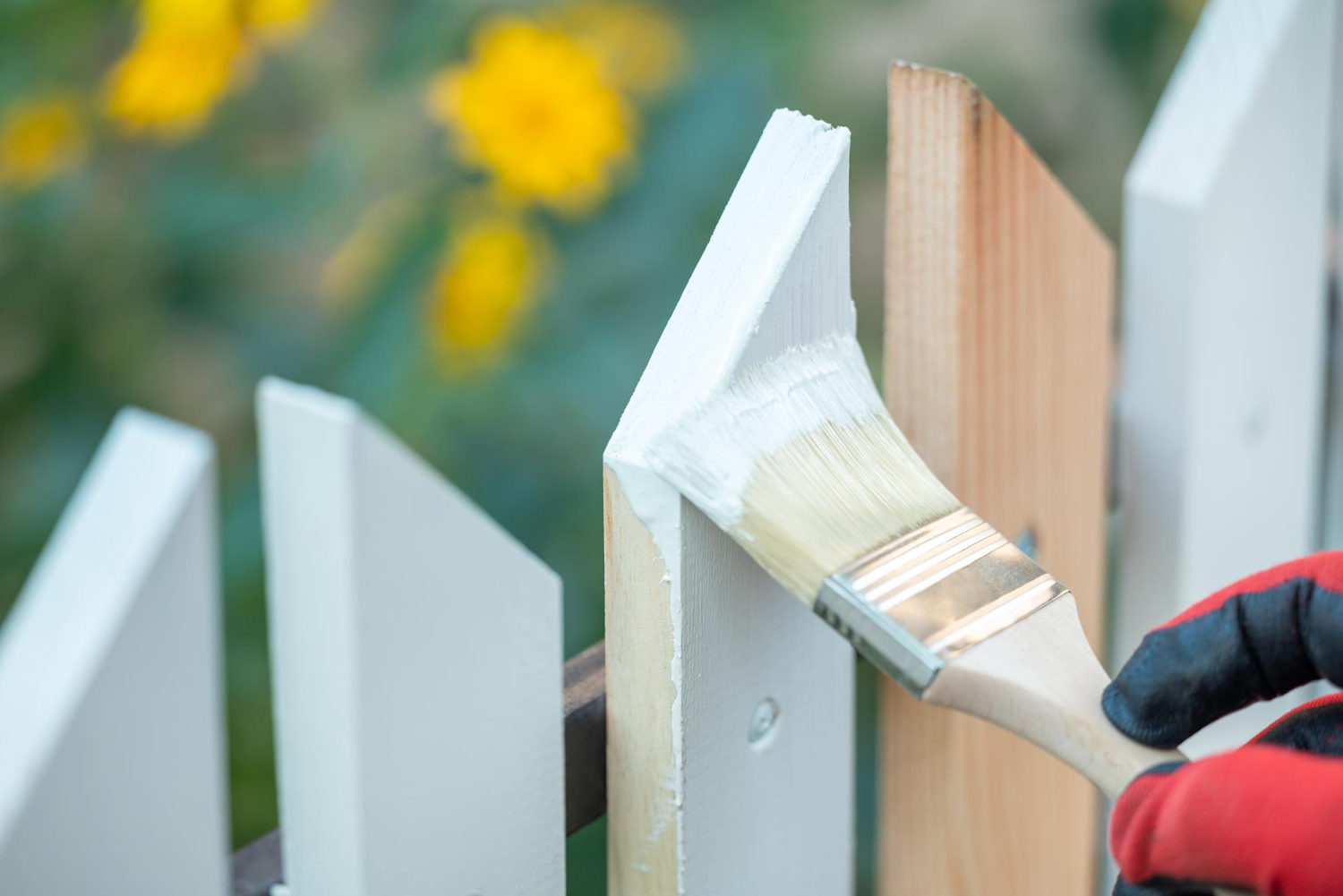Are you planning an exterior home painting project? Before you grab a paintbrush, you might want to consider a few things first.
If you have the time and patience (yes, that’s definitely a big factor) to do some DIY on your house’s exterior, it might not be a bad idea after all.
But if you’re short on time or lack the skills, consider getting professional painters with quality workmanship to transform your property. They can save you from common painting mistakes and the headaches that come with them.
Let’s explore everything you need to know about painting your home exterior like a pro!

Table of Contents
Why Exterior Home Painting Is Important
For most of us, looking good on the outside is not only vital – it’s a must, not just for us, but for our homes too.
Exterior home painting doesn’t just instantly upgrade your home’s appeal, it also acts as a shield against various external elements and harsh weather conditions, protecting it from sun damage, moisture, and everyday wear and tear.
If you want to make your house look fresh and inviting or if you’re preparing it for a sale, doing a high-quality paint job is a smart investment. And if you’re feeling lost on where to start, don’t worry as we’ll guide you to achieve that flawless finish you’ve been wanting. We’ve put together the most important things you need to know as you prepare for exterior house painting.
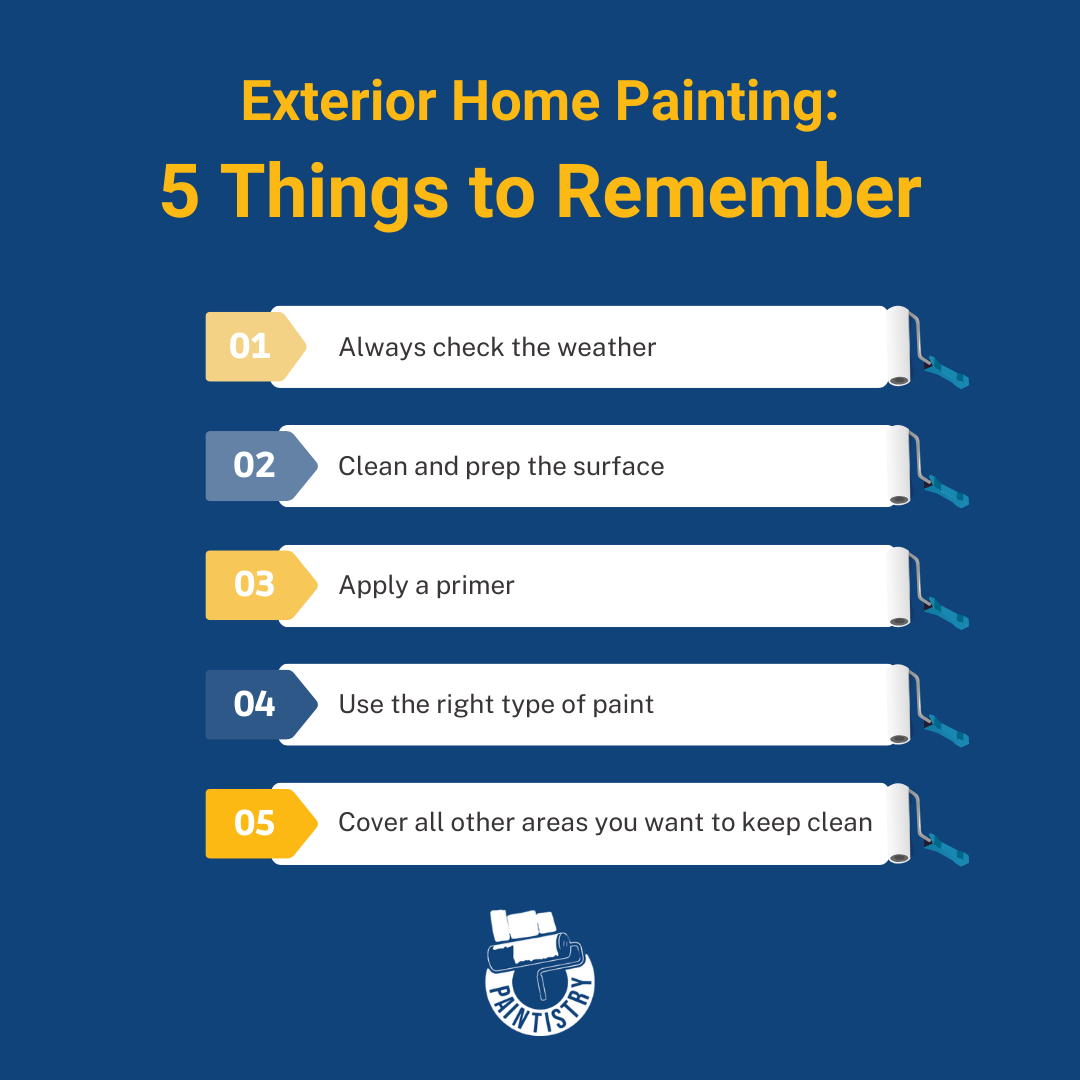
5 Things to Remember When Doing Exterior Home Painting
A perfect exterior home painting job isn’t just about choosing a color and applying the paint—it’s all about the proper prep and technique. To get a long-lasting, professional-looking finish, here are five things you’ll want to keep in mind before you start painting your home exterior.
1. Always check the weather
Sydney’s weather can be unpredictable, and the last thing you want is your fresh coat of paint getting ruined by rain or extreme heat. For the best results, choose a day when it’s sunny and the skies are clear, and it’s not too humid. Also avoid painting when it’s too windy or you might end up with peeling, cracking, or uneven paint.
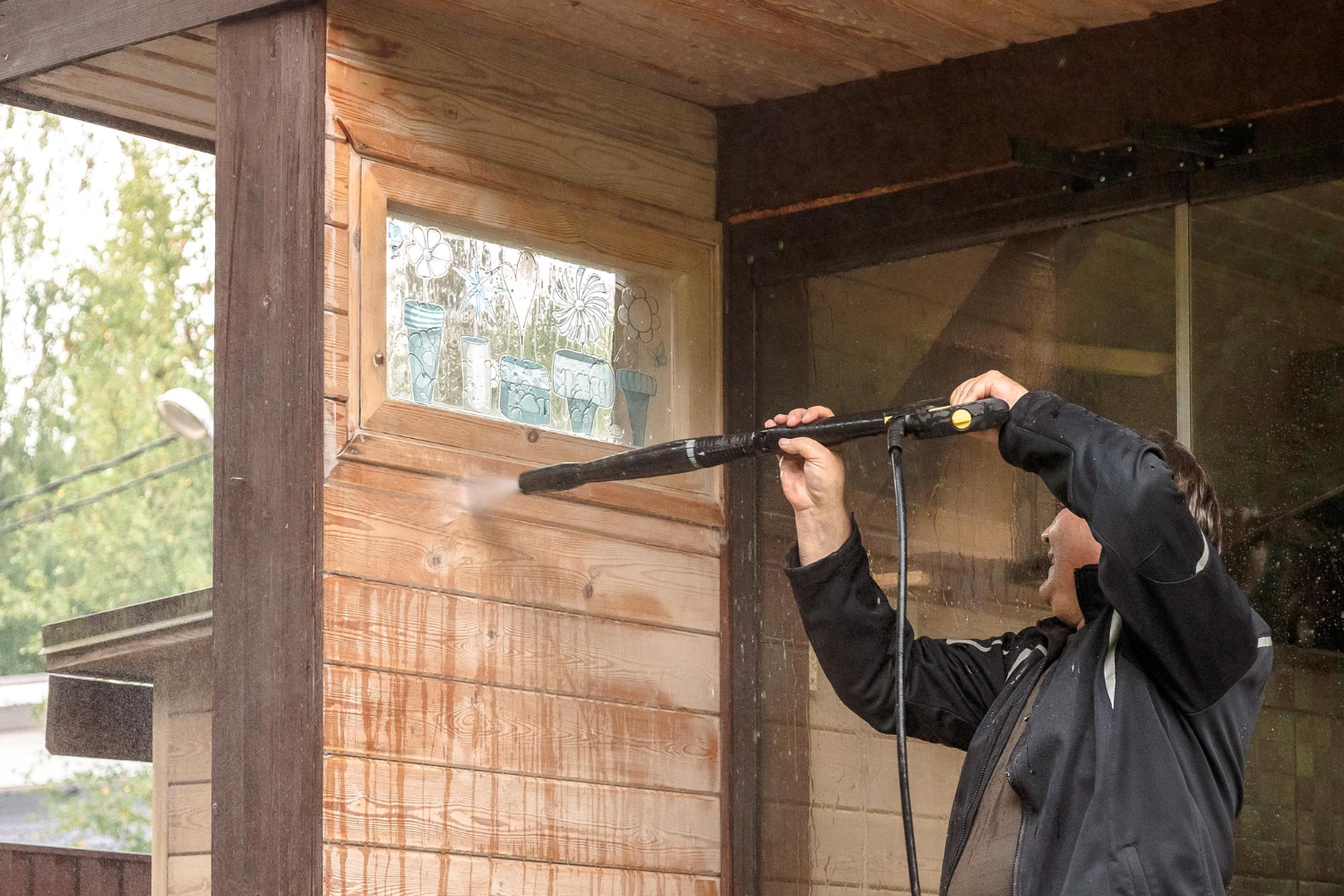
2. Clean and prep the surface
Start with a clean and smooth surface. Before you even think about opening a paint can, give your walls a good pressure wash to remove the dirt and any loose or flaking paint. Also repair any cracks or damage, then let everything dry fully. Once dry, sand or scrape any rough spots to create a solid base for the new paint stick better and last longer.
3. Apply a primer
When you’re chasing the good weather and lack enough time, you might feel it tempting to skip the primer, but that shortcut can cost you a lot in the long run. A good primer helps your paint to stick better, evens out the surface imperfections, and ensures a smooth, long-lasting finish.
This step becomes extremely important if you’re painting over a darker color or working with porous surfaces like brick or weatherboard.
4. Use the right type of paint
If you want the exterior paint to last, it’s important to apply high-quality paint from start to finish than to select cheaper, low-quality ones. For exterior home painting, you might want to use acrylic or oil-based paints. Acrylic is more flexible and resistant to cracking, while oil-based paints provide a durable, smooth finish.
Before starting full painting, also check and test first a small patch of the paint colour on your wall to make sure you’re happy with it.
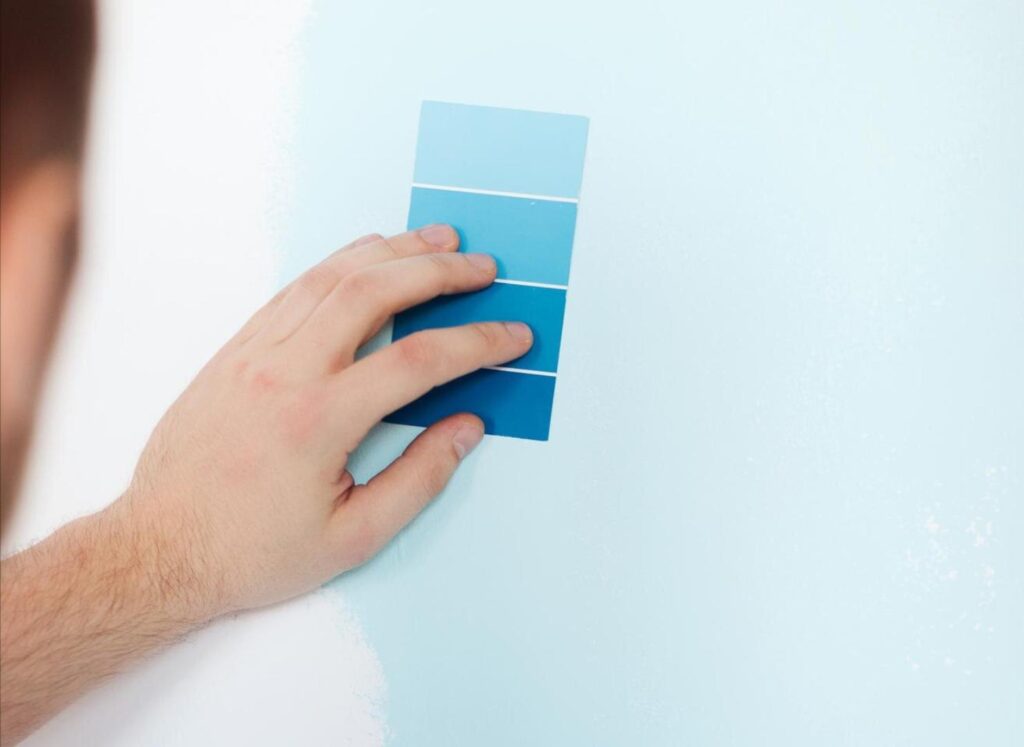
What to Look for in a Good Exterior House Paint
A great exterior paint job doesn’t just make your house look good, but it also serves as your home’s shield. Here’s what to look for when choosing the right exterior house paint:
- Weather Resistance: Choose a paint that can withstand heat, heavy rain, and humidity.
- Durability & Lasting Finish: High-quality paints last longer, which means you get to do fewer touch-ups.
- Mould & Mildew Protection: If you live in a coastal or humid area, choose a paint with built-in protection to prevent mould and buildup of mildew.
- UV Protection & Fade Resistance: The harsh sun can make the colours fade quickly, so pick a paint that keeps your home’s color fresh for years.
- Low VOC & Eco-Friendly Options: Eco-friendly paints are safer for your family, pets, and the environment.
5. Cover all other areas you want to keep clean
Before you start painting, take the time to protect everything you don’t want splattered with paint.
For extra protection:
- Use painter’s tape around edges and trims for clean, sharp lines.
- Remove or cover light fixtures and hardware to prevent accidental drips.
- Protect your driveway by using drop cloths instead of plastic, as plastic can get slippery.
This simple step saves you time on cleanup while keeping other areas paint-free.
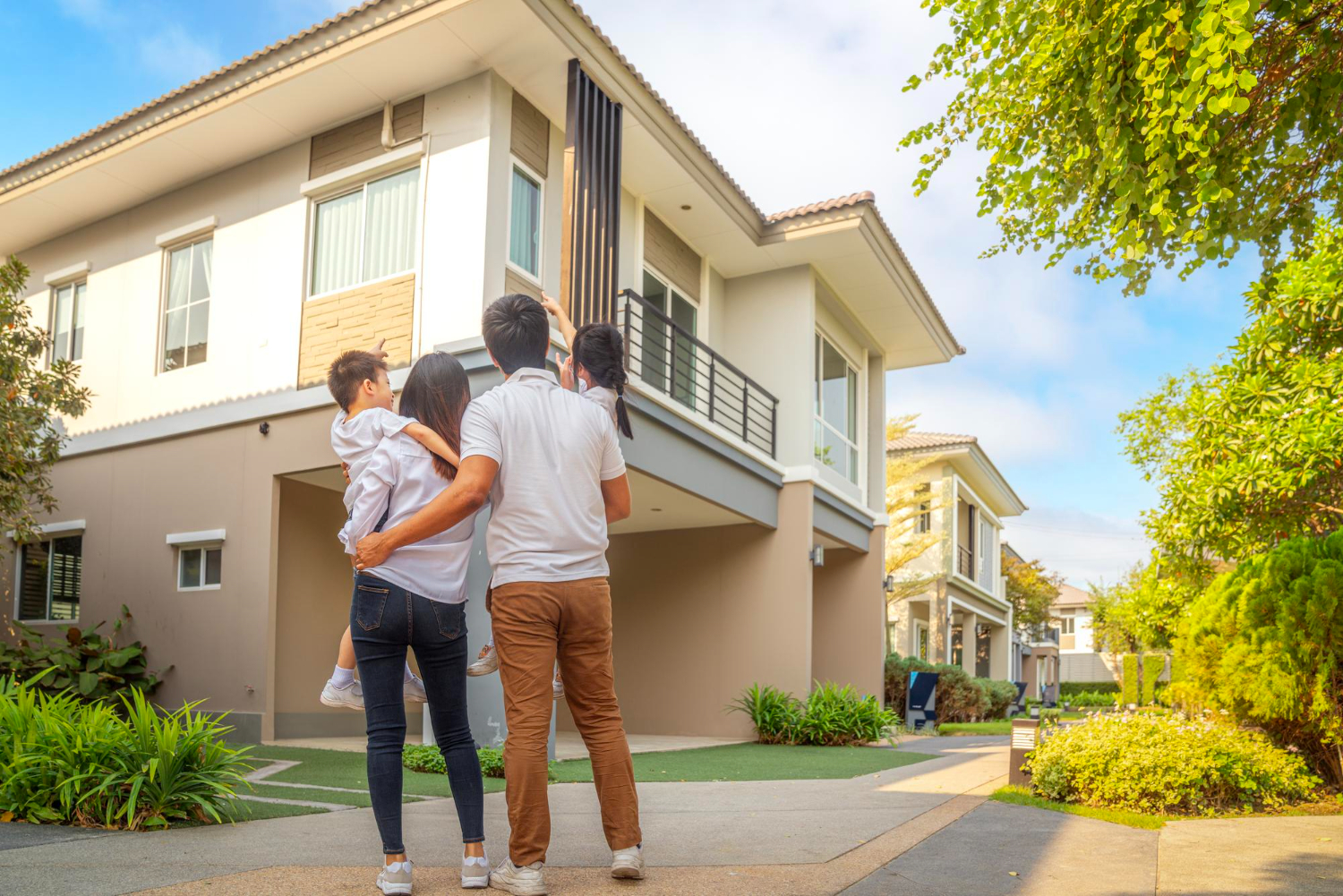
Common Questions about Exterior Home Painting
1. When is the best time to paint my house?
Timing is everything when it comes to exterior home painting. The right conditions ensure smooth application, proper drying, and long-lasting results.
- Best seasons: Spring and early autumn are ideal since temperatures are moderate and it’s not too humid, helping the paint dry evenly and last longer.
- Avoid extreme weather: If it’s too hot, the paint can dry too quickly, causing cracks. While cold or humid conditions slow drying and affect the paint’s ability to stick, leading to uneven results.
- Check the forecast: Plan for at least 2-3 consecutive dry days to give your paint enough time to set properly.
2. How often should I paint my home’s exterior?
How long your exterior home painting lasts depends on several factors, including your home’s location, the materials used, and how well the previous paint job was done.
- Climate exposure: If you live near the coast, your home’s exterior paint encounters salt spray, humidity, and moisture which causes it to wear down faster. That means you’ll need more frequent touch-ups.
- Paint quality & surface material: High-quality exterior house paint lasts longer and prevents peeling. As for the surface, timber needs more frequent repainting (every 5-7 years), while brick and render houses tend to hold up for longer (every 10 years).
- Previous prep & application: If your exterior was professionally cleaned, primed, and painted with high-quality products, you can be sure it’ll last much longer.
With regular maintenance and touch-ups, your exterior paint lasts longer, helping to prevent peeling, fading, and expensive repaints.
3. Can I use exterior paint on interior walls?
Yes, you can, but it’s not a great idea.
Why Not?
- Stronger odours – Exterior paint has added durability-enhancing ingredients, which can leave a strong, lingering smell indoors.
- Different texture & finish – It’s not as smooth as interior paint and may not give you the polished look you want.
- Harder to clean – Interior paints are made for easy cleaning, while exterior paint tends to have a rougher finish that’s less wipe-friendly.
For the best results, use interior paint for indoor walls and keep exterior house paint where it belongs—outside.
Do you want to get your exterior home painting done right the first time?
A high-quality paint job is all about the right prep and precision, and that’s where we come in! At Paintistry, we bring over a decade of experience working with top builders to ensure a smooth, durable finish that protects and enhances your home.
Reach out today and let’s talk about your project!

